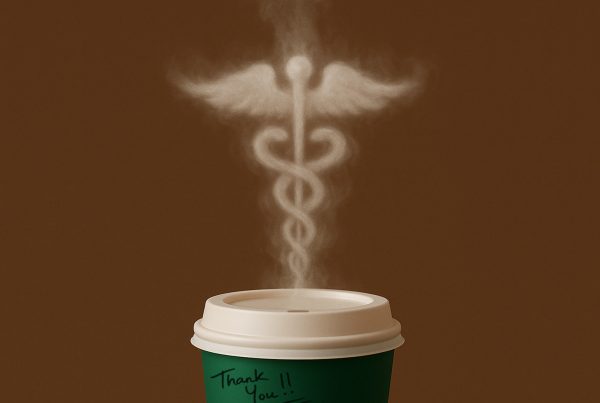The Big Story: Museum Worthy
“They are super happy with the overall direction. They just had a couple of suggestions.” – Client committee sharing ideas on improving “Starry Night” to Vincent Van Gogh.
Making Space for the Art of Innovation
By David Jarrard
3-minute read
Leaders, do you have the courage to be a midwife to creativity? Because allowing creativity to happen in and through others is an important part of your role.
It’s a risky business, being creative, channeling the imagination to produce something new, then introducing it to the “real world.”
That our healthcare industry needs creativity and innovation is so true – and has been true for so long – that it’s a cliché. The old operational models continue their lingering sunset while new approaches slowly rise. We rightly lavish praise on those who expand our industry’s horizons.
But creativity in healthcare is not a solo act. The idea itself is not enough. Many are required to make great change happen.
For the hard work of innovation healthcare may not be developing the innovation itself, but in the work of protecting its execution so it can grow roots.
To foster and advocate the creative work of others, to be the midwife of innovation that is not your own, can be as important – and as risky – as the creative act itself. What is a manuscript without a publisher?
In the delightful video created by the Association of Independent Commercial Producers earlier this year, artists Vincent Van Gogh and Frida Kahlo get feedback on their masterpieces by corporate clients, who offer recommendations for improving their paintings.
“Sorry Vincent, we just got back from testing and your painting failed,” says a client rep to Van Gogh. We’re given a glimpse of her asking a focus group about their reaction to “Starry Night.” It’s not positive.
“How does a painting fail?” asks Van Gogh.
The unspoken answer is that it fails when an expression of creativity clashes with committees and clients and others who tweak, edit and polish something surprising until it becomes something safe. That is, when the risk is purged from it. Innovation dies in committees, which are often constructed for corporate safety and butt-covering (ergo, the Van Gogh video).
Your culture is your canvas
You may not consider yourself one of the countless people who now label themselves “a creator,” the term itself a misuse of language’s paintbrush.
But as a healthcare leader you do, in fact, create the environment in which creativity – and the innovation it engenders – can thrive or die.
Your canvas is your culture. You enable the risk-taking that creativity requires. Or not. You help every colleague recognize their ability to be a creative contributor within your organization. Or not. You have the courage (or not) to defend a creative approach when the critics and the what-abouts come calling. And they always come to call.
It requires audacity to say “no” or “enough” to the groupthink and the tried-and-true. While creative approaches can have a romantic element – swing big! go for broke! – these can fail, too. It’s why they call it risk.
Yes. Healthcare is rightly cautious about new approaches to care delivery and to tinkering with its cash-strapped revenue models. Lives and institutions are at stake and must be managed tenderly. And yes, copy editors are important, time is short and precious, and every painting needs the limitations of a frame.
For creativity to thrive in our industry, courageous leaders must act, even as they are aware of those costs and pressures. For the alternative path of inaction is risky, too.
“To make the changes that are so necessary to reinvent healthcare delivery systems, administrators and employees must first be willing to take great risks,” says Bernard Healey, in “Principles of Healthcare Leadership” for the American College of Healthcare Professionals (ACHE).
“Reinventing the healthcare delivery system is certainly the greatest challenge to confront the largest industry in the United States since World War II. The most feasible and effective solution may be the development of creativity and innovation in every aspect of the healthcare delivery system.”
A masterpiece for the future of healthcare delivery may be a kind of Starry Night painted through someone’s spreadsheet or PPT slide today. Be watching for the creativity of passionate healthcare artists and take the risk to help something new arrive.
Contributors: Emme Nelson Baxter
Image Credit: Shannon Threadgill




